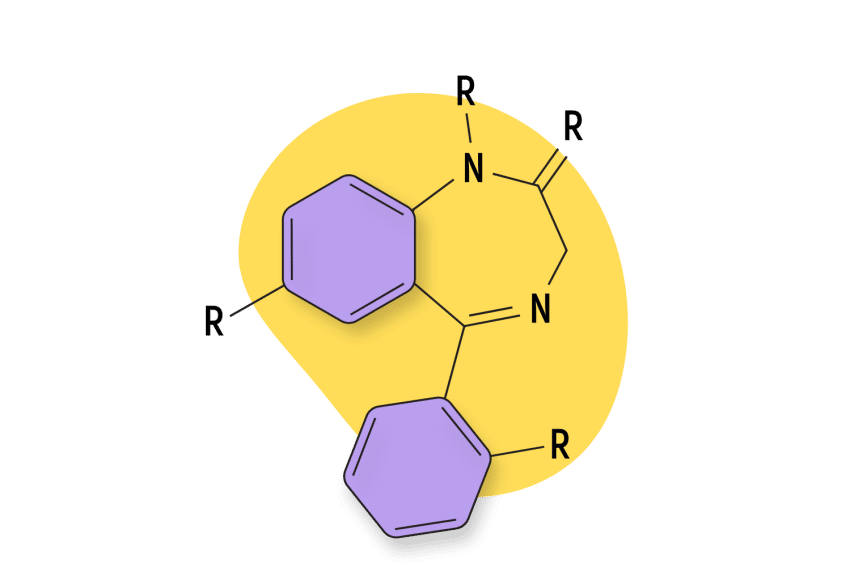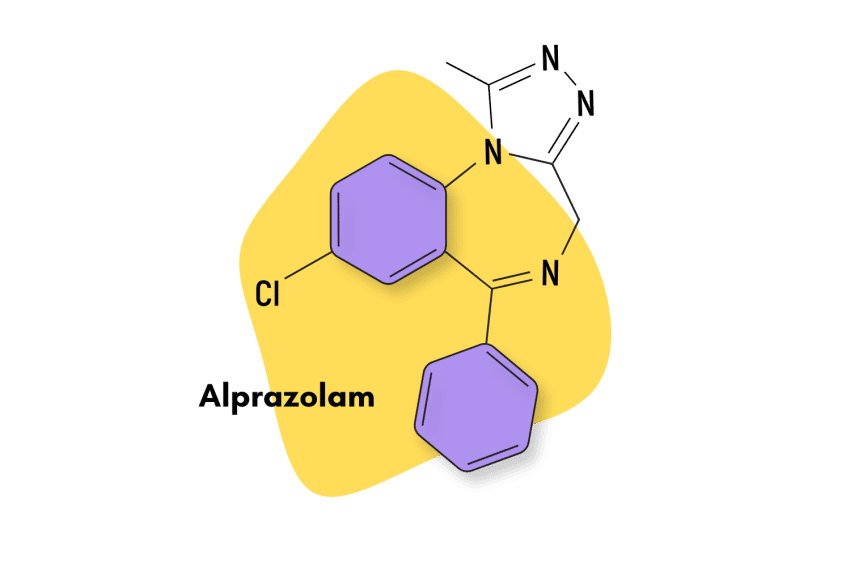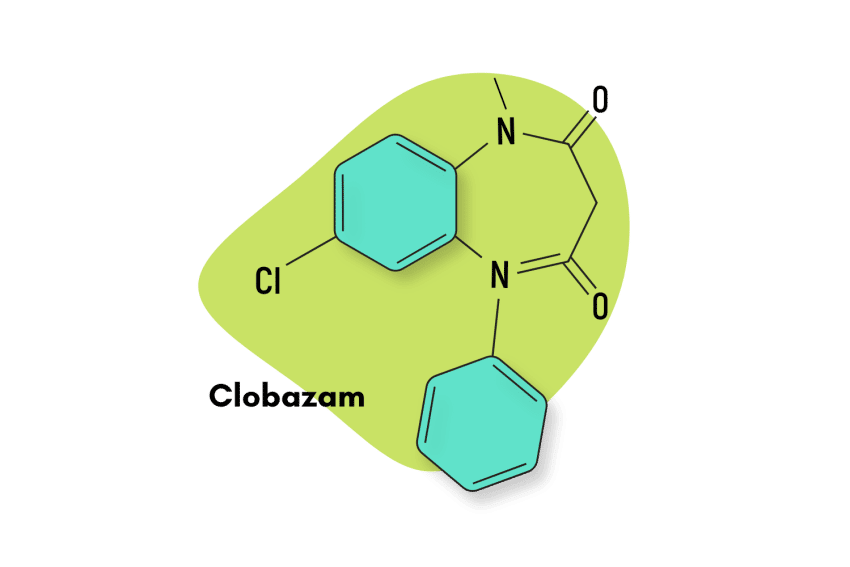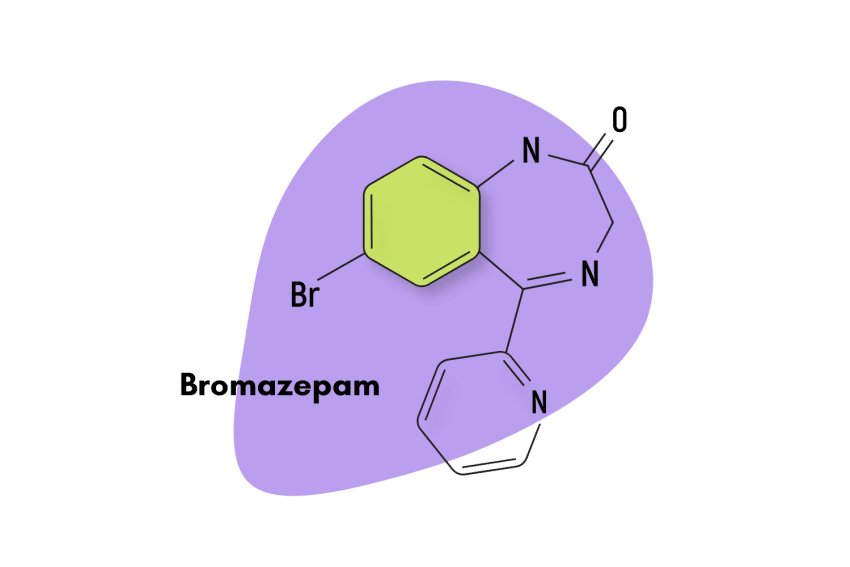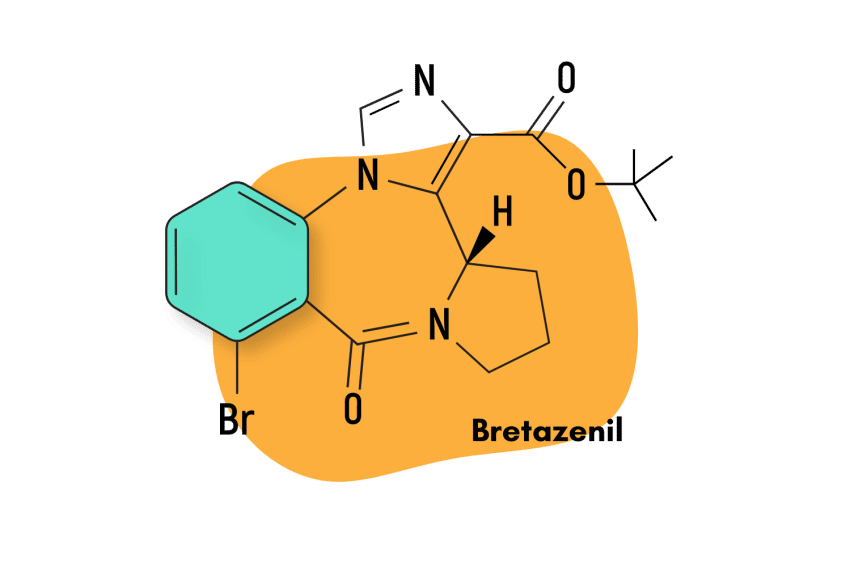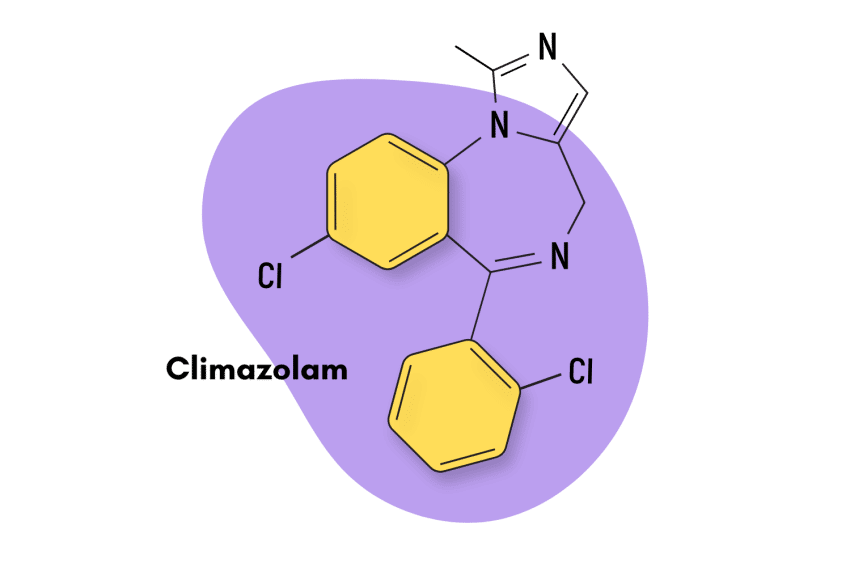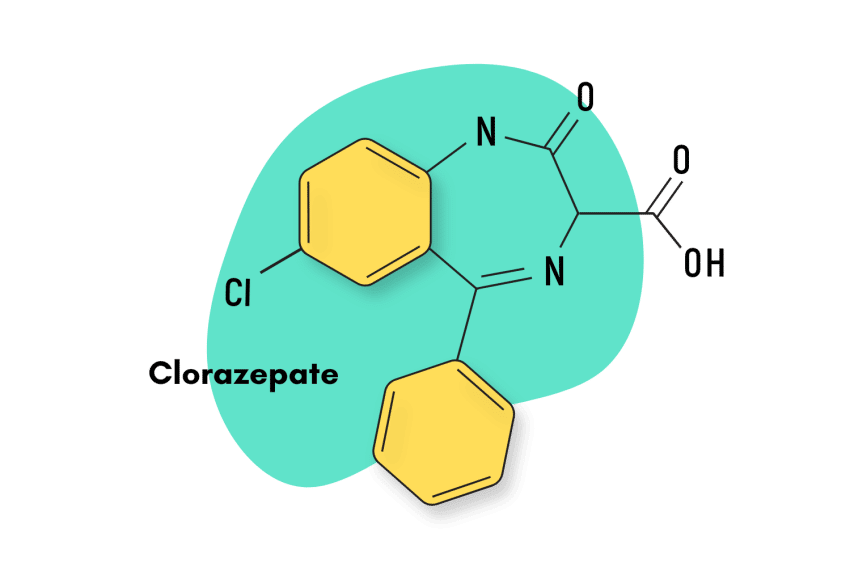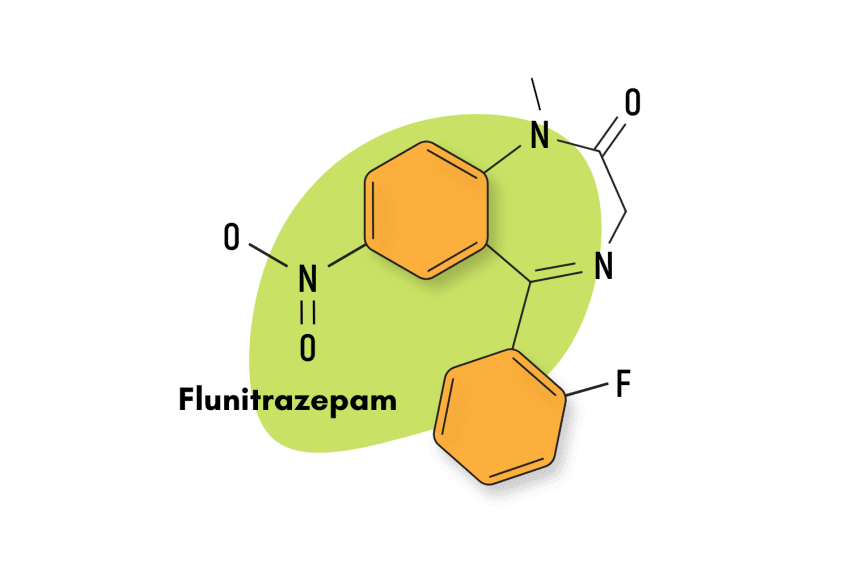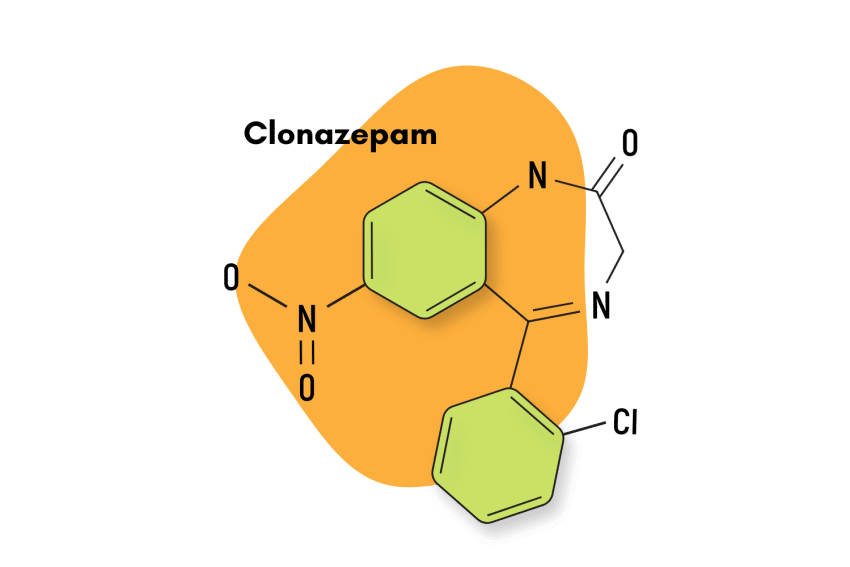Diclazepam: Fact Sheet & Harm Reduction Guide
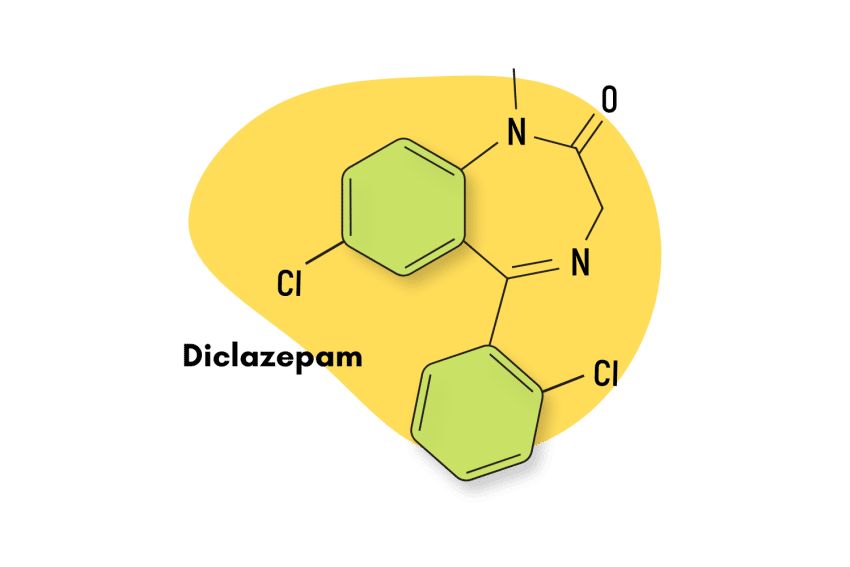
Patented by Hoffmann-La Roche during the 1960s, diclazepam —also known as 2-Chlorodiazepam and RO5-3448 —is an analog to diazepam, which never found a proper medical use and thus never made it to market.
However, it has gained popularity in the online designer drug market in recent years to become one of the leading designer benzodiazepine drugs (DBZDs) in Europe.
Official reports from leading drug agencies state that diclazepam is pharmacologically comparable to diazepam and exerts similar effects on users. This makes sense, given their high level of structural similarity. They also have comparable pharmacokinetic qualities as both compounds exhibit long-acting effects.
Diclazepam Specs
IUPAC Name: 7-chloro-5-(2-chlorophenyl)-1-methyl-3H-1,4-benzodiazepin-2-one
Other Names: 2-Chlorodiazepam, RO5-3448
Metabolism: studies on the metabolism of diclazepam have sketched a detailed picture of its metabolic pathway. Diclazepam’s metabolism is hepatic; it is transformed in the liver through N-demethylation and hydroxylation by cytochrome P450 enzymes. Diclazepam produces three pharmacologically active metabolites: delorazepam, lorazepam, and lormetazepam, which can be detected in urine for 6, 19, and 11 days, respectively [1].
Duration of Effects: the elimination half-life of diclazepam is 42 hours, which is considerably above average [1].
Benzodiazepine Dosage Equivalency Calculator
**Caution:** Benzodiazepines have a narrow therapeutic window. Dose equivalents may not be accurate in higher doses.
This calculator does not substitute for clinical experience and is meant to serve only as a reference for determining oral benzodiazepine equivalence.
Please consult a medical practitioner before taking benzodiazepines.
How Does Diclazepam Work?
Diclazepam’s primary mechanism of action is the traditional GABA-mediated pathways used by most benzodiazepines. In simple terms, benzodiazepines produce various effects by binding to the benzodiazepine receptor site and magnifying the efficiency and effects of the neurotransmitter gamma-aminobutyric acid (GABA) by acting on its receptors.
This pathway exerts a generalized inhibitory effect on the brain and central nervous system and is responsible for the traditional range of benzodiazepine-related properties. As such, diclazepam can produce, at least to some extent, anxiolytic, sedative, anti-convulsant, hypnotic, and muscle-relaxant effects. However, an analysis of 197 trip reports from online forums concluded that diclazepam was most heavily associated with anxiolytic, hypnotic, and amnesic effects. No euphoria was reported [2].
When it comes to benzodiazepines, however, the devil is in the details. The presence of secondary mechanisms of action, as well as understanding the pharmacokinetics (how it’s used and processed in the body), is key to really understanding the profile of any given benzo.
In this sense, we should note that there is evidence for using alternative binding sites by diazepam, and this property might also be shared with diclazepam [3]. Diazepam also binds to a unique benzodiazepine receptor located on the mitochondrial membrane known as the “translocator protein (18 kDa)” [4].
Diclazepam is likely significantly more potent than diazepam. This conclusion is uncertain since it relies mostly on self-assessment reports found on drug forums online, but it seems the average dose of diclazepam is much lower than that of diazepam, suggesting a higher potency.
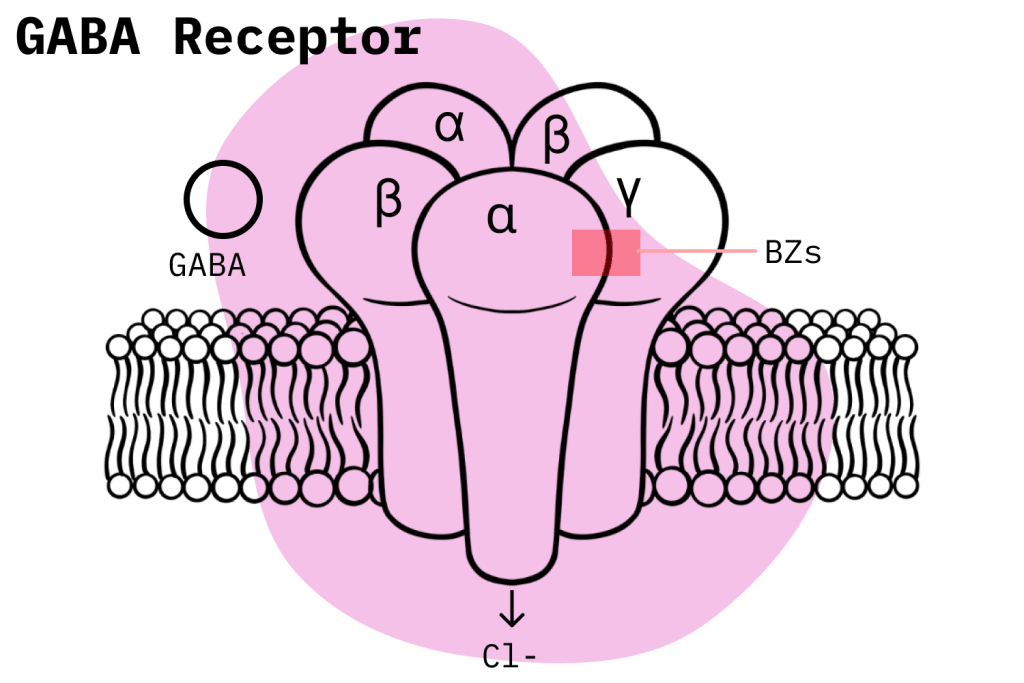
Diclazepam Pharmacokinetics
Regarding pharmacokinetics, diazepam’s elimination half-life (10-36 hours) is shorter than diclazepam (42 hours).
According to reports, this long-lasting effect is one of the main reasons users take diclazepam.
In fact, diclazepam is mainly purchased as a sleep aid, to treat anxiety, and to lessen the effects of benzodiazepine withdrawals, and it does not enjoy much recreational potential. This makes sense since recreational users prefer shorter-acting drugs. It also appears that diclazepam causes minimal cognitive impairment and is thus not favored for recreational purposes.
Is Diclazepam Safe? Risks & Side Effects
No studies directly assess the toxicology of diclazepam, and we’re mostly forced to base our conclusion on a systematic review and analysis of information found in online drug forums. However, due to diclazepam’s similarity with diazepam, we can reasonably assume that both compounds have similar risk profiles.
When we look at diclazepam’s characteristics and try to asses its risk, one thing that stands out is its extended elimination half-life. Because it takes so long to clear diclazepam from the body, there is a risk of accumulation, leading to intoxication. Also, the perceived high potency of diclazepam means that it likely holds a higher risk of significant health events like overdoses compared to lower potency benzos.
According to a report by the World Health Organization, published case reports describing acute nonfatal intoxication (n=7) and death (n=19) were identified. However, diclazepam was not found to be the main culprit in every case. It seems that diclazepam use is most popular in Europe, with Wales holding an exceptionally high number of intoxication cases where diclazepam was found to be the main drug detected.
Side Effects of Diclazepam
Unfortunately, there are no studies that can help us understand what diclazepam’s side effects profile looks like. This is a common problem when dealing with designer drugs.
But still, due to the shared nature of most benzodiazepines, we can be quite sure that diclazepam’s side effects bear a meaningful resemblance to the adverse effects commonly associated with benzodiazepines.
In lieu of a direct diclazepam study, let’s have a look at the side effects identified with diazepam:
- Antegrade amnesia
- Anxiety
- Blurred vision
- Changes in libido
- Changes in salivation
- Confusion
- Constipation
- Depression
- Diplopia
- Dizziness
- Dysarthria
- Elevated transaminases and alkaline phosphatase
- Gastrointestinal disturbances
- Hallucinations
- Headache
- Hypotension
- Incontinence
- Insomnia
- Irritability
- Nausea
- Skin reactions
- Slurred speech
- Tremors
- Urinary retention
- Vertigo

Benzodiazepine Withdrawal & Dependence
We know that all non-atypical benzodiazepines display a fair amount of dependence liability and the ability to engender withdrawal symptoms upon sudden cessation. The question then becomes: how much dependence liability does a given benzodiazepine have?
In the case of diclazepam, it’s not easy to answer this question, but our information suggests it has a comparable risk level to its analog diazepam. This would mean it has an average level of dependence liability, as diazepam is commonly used as the standard to which all other benzodiazepines are compared with.
There are likely some differences, though. The higher potency of diclazepam could make it easier to develop dependence. However, its long elimination half-life would mean that any withdrawal symptoms would probably be somewhat lessened.
In any case, users should always strive to limit the duration and dosage of their benzodiazepine treatment. Limiting these two factors is the most effective way of hedging against the possibility of physical dependence. A short break every once in a while is also a good strategy.
Harm Reduction: Diclazepam
Using unregulated designer drugs like diclazepam will always be inherently riskier than treatments utilizing benzodiazepines obtained through a legal prescription. Going through the proper channels means that doctors will likely identify the best benzodiazepine to suit your needs and ensure that users aren’t engaging in any contraindications. For reasons such as those, users who use designer drugs need to be aware of basic harm reduction heuristics to minimize their risk levels as much as possible.
Designer benzodiazepine users are likely more prone to use their benzos for recreational use, but it’s essential to understand this is not always the case. As we have already seen, diclazepam only seems to have limited popularity as a recreational compound. This, of course, doesn’t mean that intoxications don’t happen.
To stay safe, we recommend medicinal designers drugs to try and start acquiring their drugs through legal means, not because this makes them inherently safer. However, they’re likely to be purer, but because having a prescription and a doctor you can call means users are less likely to engage in misuse.
Or better yet, medicinal designer drug users could try and make the jump toward a natural benzodiazepine alternative. These days there are plenty of compounds like kratom and kava which can offer comparable benefits while offering less dependence liability and much fewer side effects. These compounds don’t tend to be as potent, though.
And in terms of recreational users, we often like to recommend a couple of behavioral adjustments that, although simple, can end up saving lives.
First, recreational users should never mix potent pharmacological compounds: this has the effect of substantially raising the dangers inherent in recreational use! If you, as a user, a determined to mix two compounds, then you should at least reduce the dosage you usually take by a large amount.

We also recommend that recreational users do their drugs in a piecemeal fashion instead of all at once. Overdoses usually happen because a user overestimates the amount of a drug that they can handle, whether that be due to poor judgment or to adulterated substances. In either case, users can hedge against this risk by splitting up their dose in half and waiting until the effects of the first dose kick in before deciding if they want to do the second half. If the compound is especially powerful, consider splitting the dosage into four quarters.
Lastly, it is always a good idea to purchase a benzodiazepine test kit to be sure of a drug’s purity level. Additionally, recreational benzodiazepine users should contact their nearest harm-reduction facility and inquire about the possibility of purchasing or acquiring flumazenil. This compound, through its benzodiazepine receptor antagonist properties, has the ability to revert the depressive effects of a benzodiazepine overdose.
Diclazepam Drug Interactions
As a benzodiazepine compound, specific drug interactions are particularly dangerous.
These mainly involve the concomitant use of other compounds, which also exhibit the capacity to depress the central nervous system, like opioids, alcohol, barbiturates, and certain natural compounds like kava or the kratom plant.
The risk stems from the fact the combined effect of the two compounds would not be merely additive but synergistic.
Simply stated, both compounds would potentiate the other making the depressive effect exponentially stronger.
Such a powerful depressive effect puts the user at risk of respiratory depression: the leading cause of death among drug overdoses. In fact, the recent rise in drug-related deaths in the United States is a direct result of an explosion in polydrug abuse, usually two depressive compounds.

Diclazepam Contraindications
- Bronchitis
- Chronic obstructive pulmonary disease (COPD)
- Conjunctive use of barbiturates, opiates, or those suffering from alcoholism
- Contraindications for benzodiazepines include:
- Intellectual disabilities due to frequent paradoxical reactions
- Major depression
- Myasthenia gravis
- Over the age of 65 (high risk)
- Personality disorders
- Sleep apnea
Diclazepam Dosage
According to what can be surmised in drug forums and official reports, the usual dose of diclazepam is in the range of 1-4 mg, with 1-2 being the most common.
Similar Benzodiazepines
Here are some benzodiazepine compounds with a high degree of similarity to diclazepam.
Diazepam
In terms of compounds that are similar to diclazepam, it doesn’t get any more comparable than diazepam (Valium). These two compounds are analogs, meaning they are almost the same, except for some minor differences. Usually, analog compounds retain a high degree of pharmacological similarity with their parent compounds when it comes to their effects profile. However, there can be meaningful differences in terms of potency and pharmacokinetics.
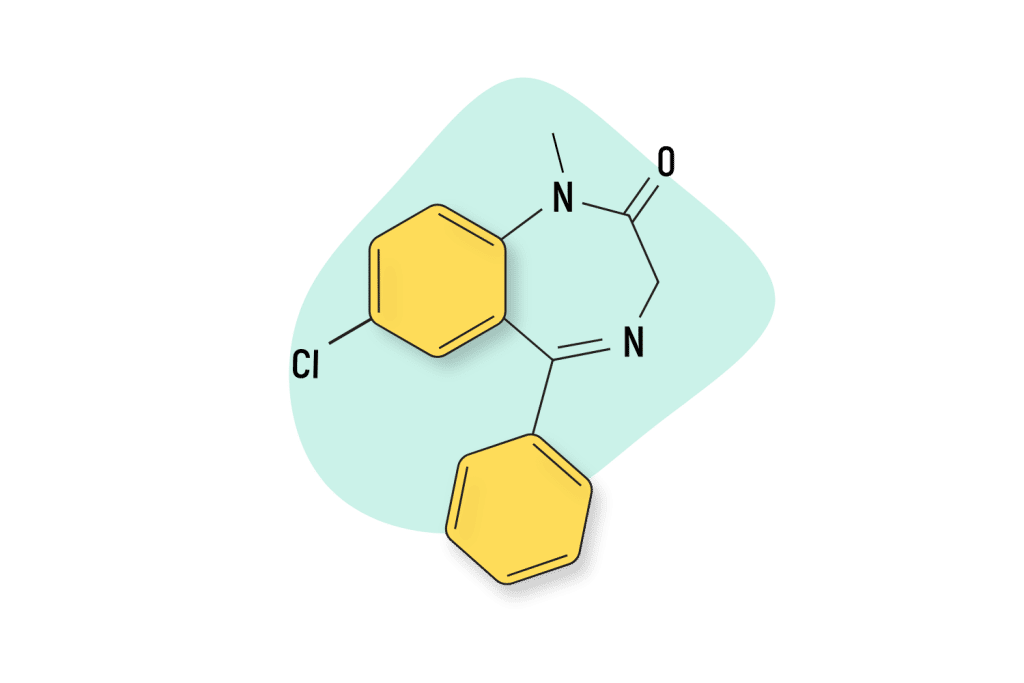
In the case of diazepam, it seems diclazepam is of higher potency and enjoys a longer elimination half-life. In all other respects, the two compounds seem to be functionally the same.
Delorazepam
Delorazepam is one of the pharmacologically active metabolites of diclazepam, and research has shown the two have comparable characteristics. Also, as a side note, delorazepam is one of the few naturally-occurring benzodiazepine compounds.

In terms of its relation to diclazepam, both compounds have roughly five to 10 times the potency as diazepam and possess a long-acting duration of effects. Delorazepam, unlike diclazepam, is an approved compound medical compound, although only in a handful of countries.
Lorazepam
Lorazepam is another of the active metabolic byproducts of diclazepam. Lorazepam, sold commercially as Ativan, is actually one of the few benzodiazepines listed on the World Health Organization’s List of Essential Medicines.
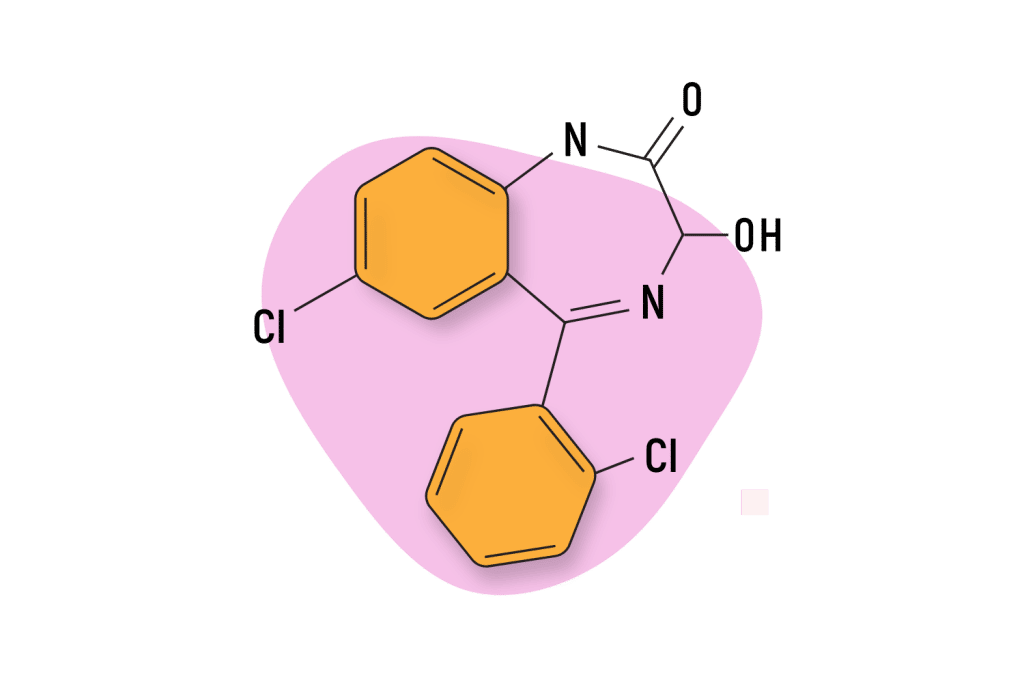
As a byproduct of diclazepam, lorazepam begins to differ more markedly from its parent compound when compared to delorazepam. For instance, it has a shorter duration of effects and lesser potency. However, regarding their effects profile, both compounds are likely similar.
Diclazepam FAQs
Structurally, what is the difference between diazepam and diclazepam?
Diclazepam is a 2-chloro derivative of the benzodiazepine diazepam. It consists of a benzene ring fused to a diazepine ring, with an R1 methyl group substitution and two substituted chlorine groups.
Diclazepam was first notified to the European Monitoring Centre for Drugs and Drug Addiction (EMCDDA) in 2013.
How long does diclazepam last in terms of the perceived duration of effects?
According to the WHO report, users often suggest that the effects of diclazepam last around five to 12 hours.
References
- Moosmann, B., Bisel, P., & Auwärter, V. (2014). Characterization of the designer benzodiazepine diclazepam and preliminary data on its metabolism and pharmacokinetics. Drug Testing and Analysis, 6(7-8), 757-763.
- El Balkhi, S., Chaslot, M., Picard, N., Dulaurent, S., Delage, M., Mathieu, O., & Saint-Marcoux, F. (2017). Characterization and identification of eight designer benzodiazepine metabolites by incubation with human liver microsomes and analysis by a triple quadrupole mass spectrometer. International journal of legal medicine, 131(4), 979-988.
- Richter, L., De Graaf, C., Sieghart, W., Varagic, Z., Mörzinger, M., De Esch, I. J., … & Ernst, M. (2012). Diazepam-bound GABAA receptor models identify new benzodiazepine binding-site ligands. Nature chemical biology, 8(5), 455-464.
- Papadopoulos, V., Baraldi, M., Guilarte, T. R., Knudsen, T. B., Lacapère, J. J., Lindemann, P., … & Gavish, M. (2006). Translocator protein (18 kDa): new nomenclature for the peripheral-type benzodiazepine receptor based on its structure and molecular function. Trends in pharmacological sciences, 27(8), 402-409.

